
"The crème-de-la-crème of the international smart set are wearing khaki this season, and the new vacation hotspot is Temple of the Forbidden Eye! Everyone’s simply agog over this new discovery by famed archaeologist Dr. Henry ‘Indiana’ Jones… They say the ancient god who presides over this miraculous temple rewards its visitors with one of three gifts: eternal youth, earthly riches, or the vision of the gods! But could there be more than meets the eye with this double-dealing deity...?"
Recently, Theme Park Tourist has been on a quest to populate our renowned In-Depth Collection with ever-expanding entries that we call Modern Marvels – fan-favorite features that dive deep into the complete stories of some of the world’s greatest living attractions. We’ve explored the design of Universal’s Islands of Adventure and its crowning Amazing Adventures of Spider-Man, embarked on a Journey to the Center of the Earth that some call Disney’s best ride ever, raced through the Grid to Magic Kingdom's future aboard TRON Light Cycle Power Run, and more. From Everest to Egypt; Tokyo's Tower of Terror to "a great, big, beautiful tomorrow," our growing collection is filled with must-read explorations into Imagineering masterpieces.
And yet, when it comes to exploration, there’s one Disney Parks attraction that reigns supreme…
Image: Disney
Indiana Jones Adventure: Temple of the Forbidden Eye remains one of the most celebrated, beloved, sensational, and daring modern dark rides on Earth nearly twenty-five years after its opening. Why? What awaits within the ancient and untouched temple of the lost god Mara? What’s so special about this one-of-a-kind Disneyland exclusive? How did it change Disney Parks forever? Might a version of this E-Ticket adventure be on the way to Walt Disney World? Like Dr. Jones himself, any discovery requires we first set off for the unknown and look back into history...
Pop-Cultureland
Main Street, U.S.A. Adventureland. Frontierland. Fantasyland. Tomorrowland.
Image: Disney
When Disneyland opened in 1955, it was comprised of those five, core, opening day lands. And, as you might expect, they weren’t picked by accident. Rather, Walt and his designers had very intentionally chosen the four core “lands” beyond the park’s hub, each aligned with pop culture in the 1950s. We’ve seen that time and time again with in-depth features on Tomorrowland attractions, watching as the land’s fluid form shape-shifted between generations, always reinventing itself to match whatever the most current visionary view of “tomorrow” could be.
But it’s true of the park’s more static lands, as well! Frontierland, for example, exists because – at the time of its 1950s conception – Americans were practically obsessed with glorious tales of American history. Legends of the “Old West” had created a generation whose children watched Howdy Doody and spent their summers outdoors playing “Cowboys and Indians”; families gathered around the television to watch Zorro, The Lone Ranger and Davey Crockett; a continuous lineup of Westerns lit up the silver screen at the local cinema… Frontierland was a natural reaction to pop culture in the mid-century, providing 1950s guests with the chance to step into a world they’d dreamed of.
Whose adventure?
The same is true of Adventureland! When Walt and his designers at WED Enterprises set to work encapsulating “adventure” into a living embodiment, they could’ve chosen the vast, ancient deserts of Egypt; the lost civilizations of South America; the vibrant islands of the South Seas… and yet, they decided that, in their Disneyland, “adventure” would be a jungle. Why? Pop culture, of course!
In the 1950s, the Western world was gaining new insight into the mysterious, distant jungles of Africa, explored for the “first time” and romanticized in films like the Tarzan series, King Solomon’s Mines, The African Queen, and Disney’s own True-Life Adventures series.
The misty, mysterious jungles populated by untamable creatures and untouched “savage” civilizations piqued the interest of Americans; that was the “adventure” they longed to step into; and thus, that’s the form Adventureland took…
Image: Disney
A land of dichotomy, Adventureland was comprised of a single path with a ramshackle outpost bazaar on one side and the endless, unbreachable darkness of the misty jungle opposite. The Jungle Cruise (modeled after 1951’s The African Queen and Disney's True-Life Adventures series) sent guests sailing through those unknowable waters aboard transit steamers with white and red striped canvases, narrowly avoiding the dangers of this beautiful and hostile lost world…
And just as Tomorrowland reformed itself in the wake of changing styles and tastes, so too did Adventureland. In 1959, Hawaii was granted statehood, becoming the fiftieth of the United States. At once, the cultural floodgates opened and a wave of Polynesia overtook the mainland; the “Tiki Craze” swept through the United States bringing floral leis, rattan furniture, Tiki torches, and bright fabrics that spread from so-called “Tiki bars” to Midwestern living rooms…
Image: Disney
And given that the word “adventure” now stirred up images of the mystic, exotic world of Polynesia, Disneyland’s Adventureland adapted. 1963’s Enchanted Tiki Room shifted a portion of Adventureland’s real estate to reflect the new South Seas style.
After Walt’s death in 1966, Disneyland paused. For more than a decade, both it and the new Magic Kingdom in Florida seemed to enter a stasis, frozen in time. While incremental “cheap and cheerful” upgrades (read: roller coasters) were added to the parks in the 1970s as low-cost crowd-pleasers, something much more damaging was happening… pop culture was moving on.
Audiences of the 1970s and ‘80s didn’t have the same connection to the “frontier” that their parents had and, predictably, the presence of a slow-moving, idling Frontierland didn’t inspire much interest; “adventure” had changed, too… and that’s primarily thanks to one legendary figure…
Cinematic thrills
Michael Eisner. (Who else were you expecting?)
When Eisner became the CEO of Disney in 1984, he was exactly what Walt Disney Productions needed to overcome the nearly two-decades of stagnation since Walt’s death. Eisner was determined to turn Disney around at its roots – its movie studio. Having come to Disney after a time as CEO of Paramount Pictures, Disney’s board (including Walt’s nephew, Roy O. Disney) expected that Eisner’s cinematic résumé would help revive Disney’s stagnant studio and return it to its former glory after 18 years of box office duds and abandoned animation.
Eisner also believed that movies would be the key to reviving Disney’s aging theme parks. It’s not as controversial as it sounds, really… After all, Disneyland had always been a place shaped by pop culture and character. Walt himself had stocked Disneyland with the stories and characters people of his time cared about… Now, Eisner suggested that the parks simply needed updated to feature the stories and characters people cared about today; that it should feature thrilling, engaging, modern rides that would capture the attention of thrillseekers and teenagers, drawing them to Disneyland with promises of popular brands.
More overtly, he suggested that Disney Parks should be places where guests could see the hottest stars and step into the cinematic worlds they’d seen on screen; that at Disneyland, guests should “ride the movies!”
The only problem is, there in the early ‘80s, Disney was not yet making any movies that people cared to see, much less ride. But someone was…
Lucas
In the 1980s, George Lucas was perhaps one of the most acclaimed filmmakers and visionary creators on the planet, with Star Wars absolutely obliterating expectations on its path toward becoming the galaxy’s biggest franchise.
And as luck would have it, Lucas was already a fan of Disneyland… and he owed Michael Eisner a favor. After all, Eisner – in his former post at Paramount – had been the one to green-light Lucas’ new, first post-Star Wars film concept… Raiders of the Lost Ark.
Image: Paramount / Lucasfilm
This new film would follow a professor-turned-adventurer – Dr. Henry “Indiana” Jones (played by Star Wars’ Harrison Ford) – on his quest through the Middle East in pursuit of the biblical Ark of the Covenant. Set in the 1940s, Lucas’ new-age tribute to pulp serial adventure films (like the ones that had shaped Adventureland) pit the rugged archaeologist against a group of Nazis racing to secure the Ark for Hitler’s nefarious use.
Naturally, Raiders, its iconic star Indiana Jones, and its swoon-worthy John Williams score went on to permeate pop culture just as Star Wars had, and Eisner’s personal approval of the project and Lucas’ love of Disneyland seemed to coalesce into a natural partnership.
Which is why – right from the start – Disney Imagineers were tasked with developing exciting new concepts that would bring the stories of George Lucas to Disney Parks. That, in the eyes of some fans, was a step too far. Not only would Disneyland (still in a holdover state from Walt’s era at the time) become a place to “ride the movies,” but they wouldn’t even be Disney movies! And yet, the projects pushed forward.
Image: Disney
While designers worked on a ways to transform Disneyland into a hip, cool, happening place for young people (beginning with the Videopolis dance club and its massive TVs screening top 40 hits), Lucas and Eisner tracked down another lifelong Disneyland fan who they suspected might be interested in a Lucas-led pop production. It didn’t take much convincing to secure international superstar Michael Jackson to star in a cutting edge 3D film to be shown exclusively in Disney Parks – a story we told in its own in-depth feature, Lost Legends: Captain EO.
Image: Disney / Lucasfiilm
The next year, they opened the even more ambitious Lost Legend: STAR TOURS. As we explore in that in-depth feature, Disney Imagineers brilliantly combined a long-lingering idea of a motion simulator with the world of Star Wars to create what was perhaps the park’s most popular ride to date. The ride became the go-to E-Ticket in Disneyland’s Tomorrowland when it opened in 1987. A clone of Disneyland’s STAR TOURS was fast-tracked to open at the still-new Disney-MGM Studios at Walt Disney World, debuting there in 1989.
Another Lucas property to appear at Disney World’s new movie-themed park? The Indiana Jones Epic Stunt Spectacular. The 25-minute show (executive produced by Lucas himself) is a “behind-the-scenes” style stunt show ostensibly breaking down how the effects in Raiders came to be, albeit awkwardly clinging to the premise that we’re watching real reshoots of the film to this day, three sequels later.
Image: Disney
After Indiana Jones and the Temple of Doom (1984, a dark prequel film centered around a Southeast Asian temple) and Indiana Jones and the Last Crusade (1989, a jaunt across Europe in search of the Holy Grail), it became clear that Indy would remain a pop culture figure on par with James Bond or Han Solo, which meant his inclusion across Disney Parks was assured… and plans for Indy to come to Disneyland took a form far more ambitious than a stunt show… Read on…
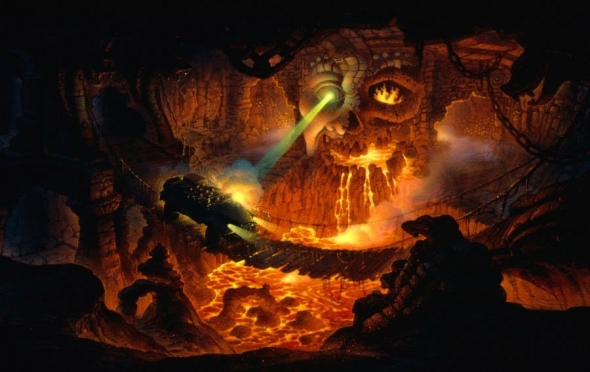
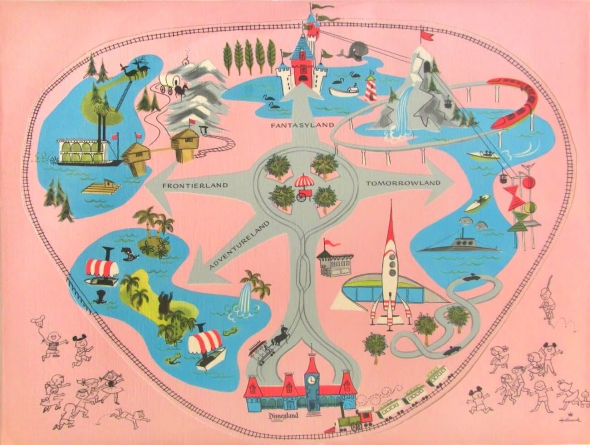
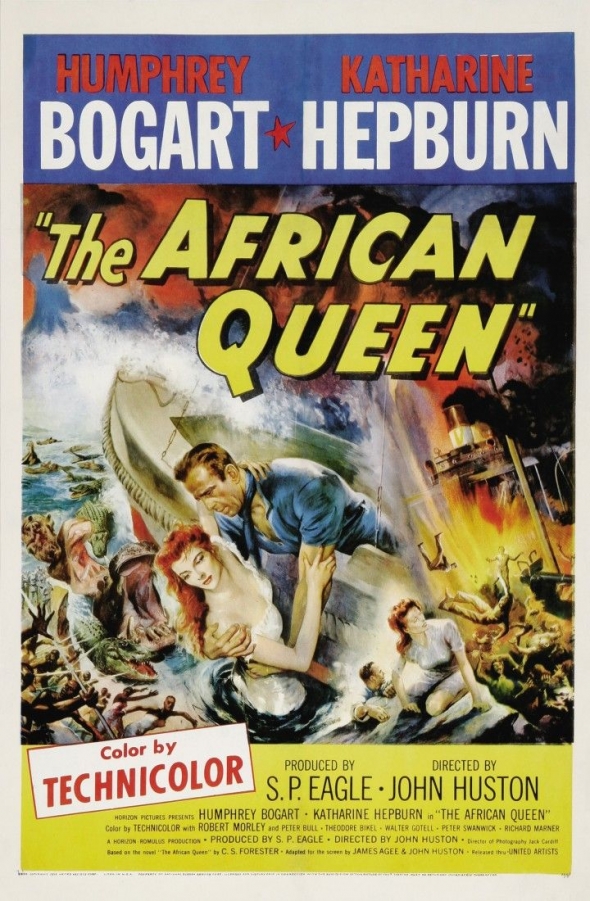
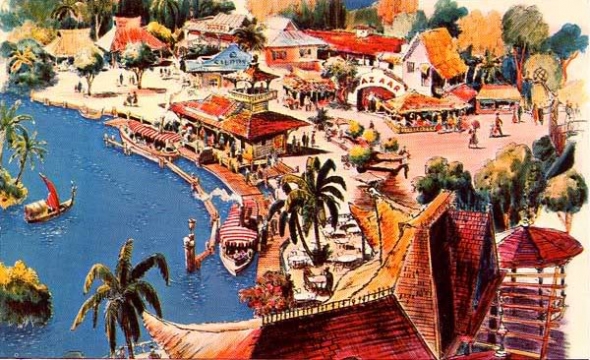
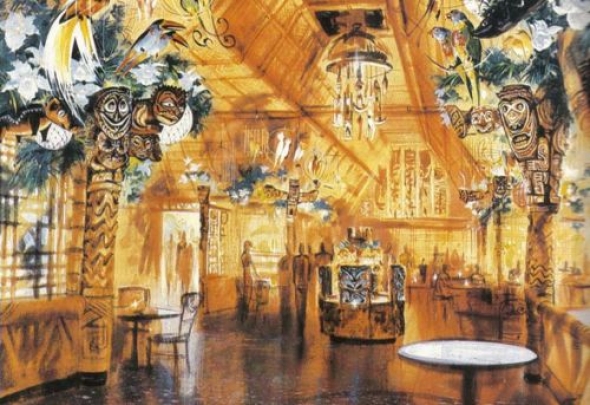


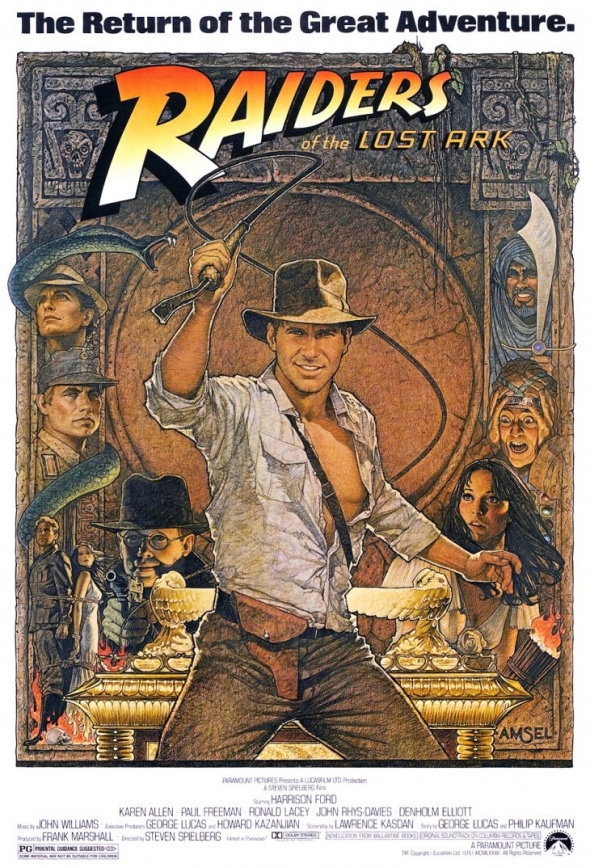
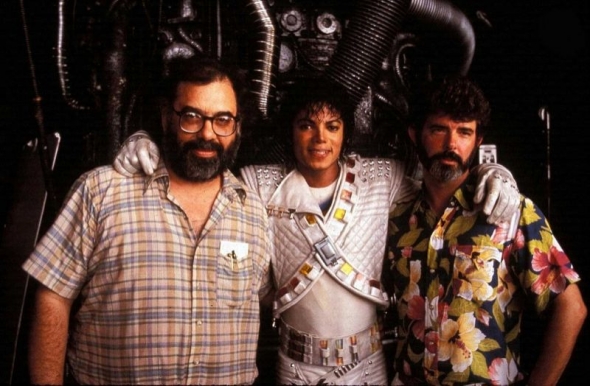
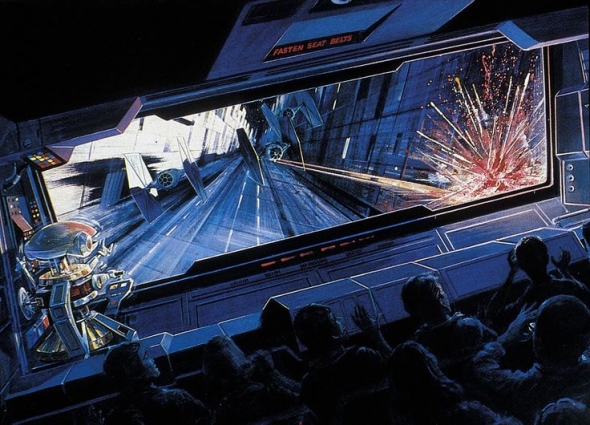
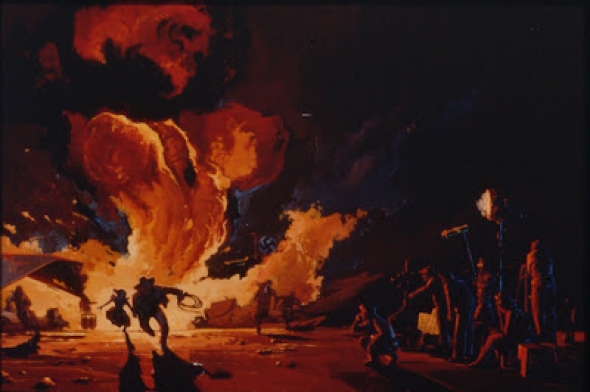

Add new comment